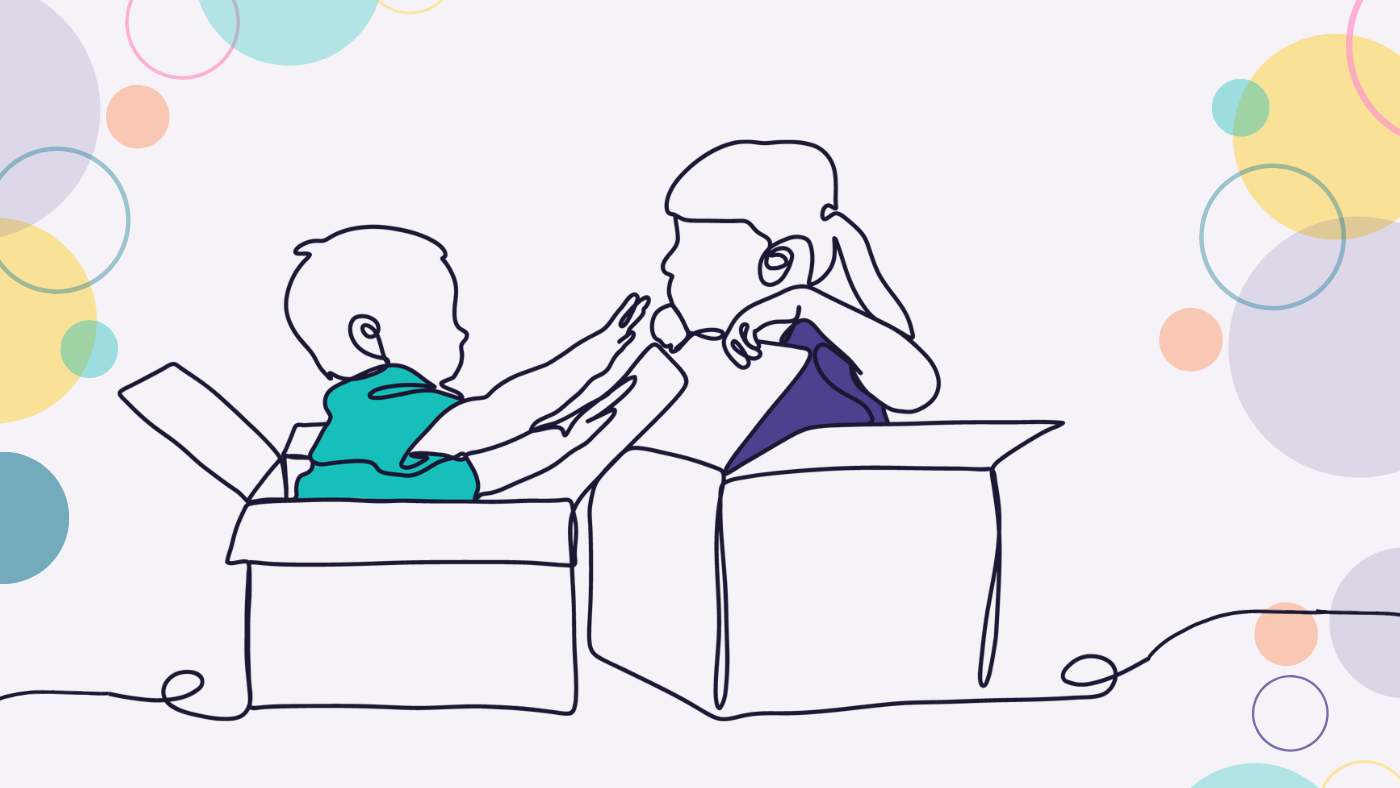Ideas for zero waste play

This week is zero waste week – a week focused on encouraging everyone to reduce the waste that ends up in landfill. While actually achieving zero waste might feel unrealistic, if you’ve looked round your home and wondered how you already have so many toys (lots that aren’t played with anymore), you might be ready for some zero waste play ideas.
As always, if you’re going to give your child anything to play with that isn’t a toy check it is safe for them and their current skills and be there to supervise their play.
Zero waste doesn’t mean zero toys
Lots of our ideas for play with your child use things that aren’t toys, but that doesn’t mean we’re saying children shouldn’t have any toys at all. And some people would say anything that is played with is a toy!
What we know is that your child doesn’t need hundreds of toys, what they need are good quality toys that they can use in different ways.
One of our favourite quotes about choosing toys is “The child should do 90% and the toy should do 10%”
This means if your child is passively watching as a toy does all sorts of fun things, really that isn’t a good toy.
Truly good toys are interesting to hold and move, they can be used in different ways and they'll last –they’re the kinds of toys your child will play with for years, then you’ll pass them on and another child will play with them, and so on.
One step towards zero waste play is to take time to think about the toys you do decide to buy and ask how much your child is doing and how much the toy is. Is the toy something they can play with in different ways as their skills develop? Will it last?
These kinds of toys will often be things like wooden blocks, or the mirrored pebbles from our toy range, which are great for babies as they explore placing one thing on top of another but then can be used in lots of more complex ways as children’s imaginations grow.
Another way to reduce landfill from toys is to give clean and unbroken toys to family or friends with younger children, sell (and buy) toys second-hand or use a local toy library service, and see if any local groups would be grateful for toy donations when you are having a clear out.
Can you play with the rubbish/recycling?
We always say before you put anything in the bin or recycling ask yourself if your child could play with it – make sure it’s clean and safe for them, but lots of things that we might throw away can be used for play.
Some ideas:
Plastic tubs and lids – these are great for filling and emptying, and for practising taking lids on and off.
Cardboard boxes - if they’re big enough they can be a brilliant den or smaller boxes can be great for early scribbles.
Junk mail – letters and leaflets can be folded into new shapes, ripped up for collages, drawn on, used in posting games or turned into teddy bear capes.
Use what you have around you
Children don’t need loads of toys to learn, when you look at the activities in the app you’ll see we have lots of ideas that use things you already have.
You could set yourself a challenge to have a weekend of play without toys – try these ideas to get started:
Make a treasure basket
Find a box or container and have a look in your cupboards for some interesting, and safe objects for your baby to explore. You could include things like a wooden spoon and a mental spoon, a piece of fabric, and a coaster.
Place the container where your baby can reach it and watch as they explore the objects.
Go collecting
Give your toddler a bag or box and go for a walk together, or if it’s raining have a walk around your house.
Tell them you’re going to collect some interesting things to look at together and see what they find.
Watch them closely to make sure they don’t touch anything unsafe.
Then have a look at their collection together, and chat about all the things they’ve found.
Use your imagination
As your child’s imagination develops, encourage them to make up stories and games simply with what you have around you.
You could start by using a familiar story to give you an idea, perhaps doing something like going on a bear hunt together.
Then as your child has more of their own ideas, you could encourage them with a simple, “I wonder what that box could be today...”
Give them plenty of time to think about their ideas and share them with you.